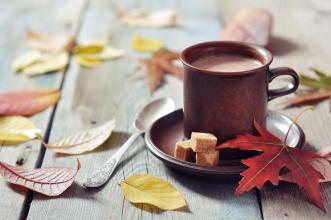Description of Mexican Coffee Flavor with strong Sweet Flavor introduction to boutique coffee
Coffee growing areas in Mexico are concentrated in the southeastern highlands, near Guatemala. The mountains in the south are mostly volcanic areas, and the volcanic ash soil is not only conducive to the drainage of coffee roots, but also provides sufficient nutrients for the growth of coffee trees. Most of the coffee varieties planted are Kadura, Dibika, Bourbon, etc., and the treatment method is mostly washed by water, graded according to altitude.
Coffee beans are mainly exported to the United States, and about 70% of coffee is exported directly to the United States, where it is used as a large industrial bean, which has become a coffee plantation in the United States. Yet mexico's annual production is not proportional to its place in the coffee world. Although the yield is large, it lacks some representative quality coffee. So when it comes to understanding Mexican coffee, most people, including myself, will feel unfamiliar. Mexican coffee exists awkwardly as an outsider as we savor and discuss beans from the best regions of the world.
But with a climate suitable for coffee growing, excellent coffee varieties, excellent soil and high altitude growing areas, why is Mexico's coffee quality unsatisfactory?
A few days ago, when I rushed to Mexico, some colleagues called Mexico popcorn coffee. The quality of raw beans exported from Mexico before was not good. Sometimes, the raw beans bought were mixed with a little corn and sand. If the corn is not sorted and mixed with raw beans and sent to the roaster, it will really become popcorn. But the quality of Mexico's exports of raw beans has improved greatly, and the adulteration of corn kernels has been a story many years ago. Corn was bred by the ancient Indians of Mexico, so Mexico is known as the "hometown of corn", corn is also Mexico's main crop. The coffee wasn't processed well enough in the drying process to get mixed into the corn kernels. That would explain why it was corn. It is not difficult to find out from this matter that the root cause of the unsatisfactory overall quality of Mexican coffee lies in the subsequent production and treatment links. From the harvesting, handling, grading, packaging and transportation of coffee fruits, improper handling can lead to the loss of good flavor. Mexican coffee selection is generally carried out manually. The main basis for selection is according to the fullness of coffee particles, whether uniform, and then divided into grades. Generally speaking, coffee with full and uniform particles is easier to preserve. Only the purest and most uniform coffee beans can be roasted to represent the best and finest coffee in the country.
After the coffee beans are picked, they are spread out in a special room with ventilation on all sides. About a week later, the beans are packed into loose bags so that wind can blow through the bags. After about seven weeks, coffee beans change color and taste. Finally, these coffee beans are manually selected to select high-quality coffee beans and formally bagged for preservation.
Aldumara coffee beans are Mexico's top coffee beans, which are large in size, with intense sweetness, acidity and good aroma.
Mexicans are optimistic and enthusiastic by nature. It can also be seen from their coffee. The mellow Mexican coffee is not only loved by the native people, but also praised by many coffee connoisseurs. There are many ways to taste Mexican coffee, mainly divided into alcoholic and non-alcoholic practices.
Alcohol-free Mexican coffee is often served with milk. Heat a cup of milk, a teaspoon of cinnamon powder and a teaspoon of vanilla powder in a saucepan over medium heat. Then add cocoa powder, dissolve well and stir well. If you like chocolate, you can use chocolate paste instead of cocoa powder mixed with milk. Allow the milk to cool for about 5 minutes before pouring into the coffee. Garnish the coffee with cold cream and a cinnamon stick. Chocolate and cinnamon aromas blend together to give off a desert flavor. Tasting such a cup of coffee, you feel as if you are walking through a desert full of vicissitudes

Important Notice :
前街咖啡 FrontStreet Coffee has moved to new addredd:
FrontStreet Coffee Address: 315,Donghua East Road,GuangZhou
Tel:020 38364473
- Prev

Costa Rican Yerzaro Coffee Flavor description with ideal acidity introduction of fine coffee in producing area
All the coffee trees planted in Costa Rica are Arabica coffee trees. through improvement, the quality of coffee beans is better and more stable. in order to facilitate picking, coffee trees are kept at a height of about 2 meters through continuous pruning. The coffee that people eat is the taste of the seeds in the fruit that are brewed in water. After picking raw coffee beans, the peel, pulp, seed film and sun exposure must be removed.
- Next

Description of Dominican Coffee Flavor with pleasant fragrance introduction to the taste characteristics of boutique coffee beans
Unlike coffee produced in Haiti, most of the coffee grown in the Dominican Republic has been washed, which is a symbol of high quality. Miniga Coffee uses a washing method to treat coffee beans, so that the quality of treated coffee beans is more guaranteed. The coffee beans treated by washing method retain more original flavor than the drying method, and the aroma is pure and soft. Carefully selected and made in this way
Related
- Detailed explanation of Jadeite planting Land in Panamanian Jadeite Manor introduction to the grading system of Jadeite competitive bidding, Red bid, Green bid and Rose Summer
- Story of Coffee planting in Brenka region of Costa Rica Stonehenge Manor anaerobic heavy honey treatment of flavor mouth
- What's on the barrel of Blue Mountain Coffee beans?
- Can American coffee also pull flowers? How to use hot American style to pull out a good-looking pattern?
- Can you make a cold extract with coffee beans? What is the right proportion for cold-extracted coffee formula?
- Indonesian PWN Gold Mandrine Coffee Origin Features Flavor How to Chong? Mandolin coffee is American.
- A brief introduction to the flavor characteristics of Brazilian yellow bourbon coffee beans
- What is the effect of different water quality on the flavor of cold-extracted coffee? What kind of water is best for brewing coffee?
- Why do you think of Rose Summer whenever you mention Panamanian coffee?
- Introduction to the characteristics of authentic blue mountain coffee bean producing areas? What is the CIB Coffee Authority in Jamaica?

